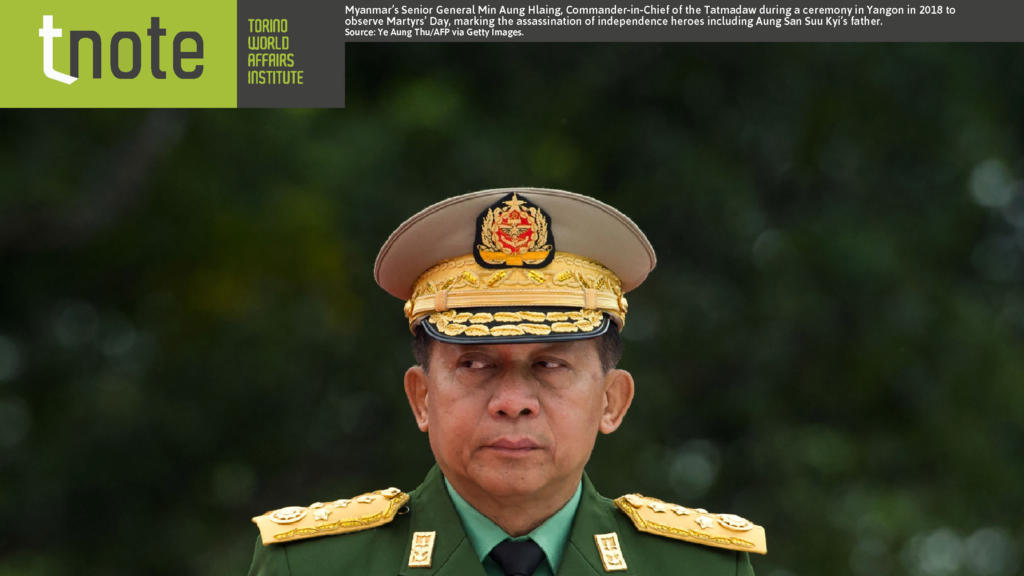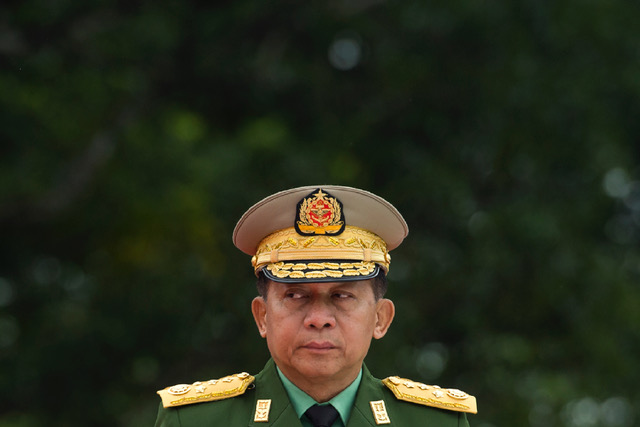
Myanmar’s military – the Tatmadaw – forcefully returned to government on 1 February, ten years after formally relinquishing power. State Counsellor Aung San Suu Kyi, President Win Myint and many other politically prominent figures were arrested under a variety of pretexts, just as the new Parliament resulting from November’s elections was about to convene. Senior General Min Aung Hlaing, Commander-in-Chief of the Tatmadaw, became the highest formal authority, appointing himself as head of government. To justify the takeover, the Tatmadaw alleged malfeasance in the November 2020 general elections (won in a landslide by the National League for Democracy – NLD), despite the elections having been verified as free and fair by independent observers.
The sudden military takeover came as a surprise. The Tatmadaw has been the architect of the country’s political liberalization, and there were no immediate reasons for the military to change course. The rationales for the Tatmadaw accepting some degree of political openness, namely to realign away from China, tighten ties with ASEAN countries and relaunch the economy, are still in place. The 2020 electoral result did not diverge significantly from that of 2015. And – above all – the military-designed Constitution in force since 2008 could not be touched without the Tatmadaw’s consent: any amendment requires a favourable vote in Parliament of at least 75%+1 to pass, and the military controls 25% of parliamentary seats via non-elected appointees.
So why did the Tatmadaw decided to return to power? And what does this tell us about the future of Myanmar’s regime? Regarding the latter question, while the ‘coup’ has definitely paused Myanmar’s short spell of democracy, it is not a given that it heralds a return to the model of direct military rule that characterized the country for decades. The 2008 Constitution includes provisions for temporary military rule, and the Tatmadaw has relied on these provisions to return to power. Of course, this does not change the political substance of events: the military are running the country, again. But it does point to the fact that the Tatmadaw may still be satisfied enough with the semi-democratic regime it created and may want to return to it at some point – just after it has fixed some issues it is not really happy about.

Myanmar’s Senior General Min Aung Hlaing, Commander-in-Chief of the Tatmadaw during a ceremony in Yangon in 2018 to observe Martyrs’ Day, marking the assassination of independence heroes including Aung San Suu Kyi’s father. Source: Ye Aung Thu/AFP via Getty Images.
So what are these issues? It is too soon to know with certainty, but they are likely to be found among the following: 1) the electoral system; 2) the peace process; and 3) the appointment of a new Commander-in-Chief following Min Aung Hlaing’s approaching retirement.
Regarding the first issue: now that two rounds of elections have been won in landslides by the NLD, the Tatmadaw may have realized fully that the first-past-the-post electoral system currently in place is not going to provide a decent number of seats for the Union Solidarity and Development Party (USDP; the military proxy party) anytime soon, which will sideline the Tatmadaw from formal politics more than it wants. Not incidentally, talks of reforms towards proportional representation are already under way.
Regarding the second issue: the peace process achieved a major result under the semi-civilian government run by former general Thein Sein, when it brought the Nationwide Ceasefire Agreement (NCA) into existence in 2015. However, there has been no real progress since, and some among the NCA non-signatories had begun to push for greater involvement from China in the process. This may have set off the Tatmadaw, which is naturally wary of the potential involvement of its giant neighbour in what it considers purely domestic affairs. The Tatmadaw created a new full-military negotiating team just before the last elections, and further empowered it after the military takeover. This may be a sign that the Tatmadaw is going to refurbish the peace process in its own way.
Last but not least, there is the issue of Min Aung Hlaing’s succession: the current Commander-in-Chief is close to sixty-five, the age set for retirement from his position. For the Tatmadaw, the problem may lie in the degree of autonomy – and in the amount of compromise – it must accept in defining who is next in line. According to Article 342 of the 2008 Constitution, ‘the President shall appoint the Commander-in-Chief of the Defence Services with the proposal and approval of the National Defence and Security Council [NDSC]’. The Constitution was designed by the military, and in it the Tatmadaw ensured for itself control of the NDSC via control of the majority of its members. The NDSC is formed of eleven people: the president; the two vice-presidents; the speakers of the lower and upper houses; the Commander-in-Chief of the Tatmadaw and his deputy; and the Ministers of Defence, Foreign Affairs, Home Affairs and Border Affairs. In addition to the Commander-in-Chief and his deputy, the Ministers of Defence, Home Affairs and Border Affairs are also from the military, as explicitly mandated by the Constitution. The sixth (and decisive) vote is controlled by the Tatmadaw via one of the two vice-presidents, the one who is elected by the military component of the Parliament and hence naturally leans toward the Tatmadaw’s political preferences.
Given the Tatmadaw’s control over the NDSC, why would it have any problem in designating Min Aung Hlaing’s successor as it wishes? In the pre-coup scenario, a possible catch lay in the fact that the current Commander-in-Chief might have had to retire before the NDSC could designate and approve a successor. This could have tilted the delicate balance between civilians and the military in the process of appointing a new Commander-in-Chief in a way the Tatmadaw would not want, leading to negotiations and potentially to the designation of a candidate of compromise, who might be open to reforms. This scenario was even more likely given that the presidency would be firmly in the hands of the NLD. From this premise, it is easy to see why Min Aung Hlaing wished to secure the presidency for himself: resigning as Commander-in-Chief while entering office as president would have guaranteed that he – and the Tatmadaw – would retain control over the process of hand-picking a new Commander-in-Chief. However, the results of the last elections did not provide the USDP with enough seats to make this plan feasible, as summing its votes with those of the military appointees was still not enough to elect a new president. That power remained firmly in the hands of the NLD.
Unless forced to relinquish power by pressure from below or outside – something that currently seems unlikely – it is probable that the Tatmadaw will cede formal power of its own volition at some point, to return to benefiting from the advantages of partial democracy. Whatever changes the Tatmadaw makes to the political assets of the country between now and then will be revealing of its reasons for taking power on 1 February. Nonetheless, even after ‘returning to barracks’, the Tatmadaw will still be a political force to reckon with in Myanmar, probably away from the spotlight of formal politics but keeping a firm grasp on the levers of power.
Author
Stefano Ruzza is Associate Professor of Political Science at the University of Turin and Head of Program at T.wai.
Download


Copyright © 2025. Torino World Affairs Institute All rights reserved
